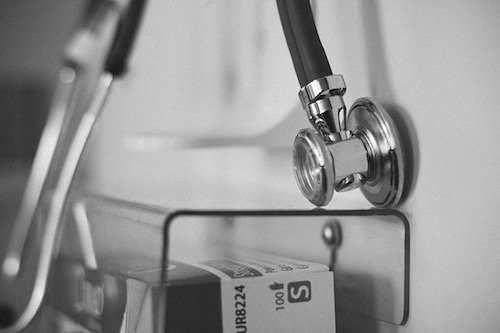Best Practice: How Florida Hospital has implemented more than 500 innovation projects in just 4 years
In times of rapidly changing business models and new technologies, the traditional healthcare industry is coming under increasing pressure. Generating and managing innovative ideas effectively and sustainably is therefore also becoming increasingly important in the medical environment. In this article we will show you how the Florida Hospital has mastered this challenge.

What makes Florida Hospital Innovation Lab unique?
The Florida Hospital is a non-profit hospital association with 30 locations throughout Florida. To keep pace with the digitalization of the medical environment, Dr. Karen Tilstra established the Florida Hospital Innovation Lab (FHIL) in 2012. The newly created innovation department was located directly in Florida Hospital Orlando.
The special: The FHIL is not only available to a few employees, but to all health professionals of the Florida Hospital. The employees of the Florida Hospital were invited by their managers to come to the FHIL with their problems, concerns and ideas and to develop new solutions together with the professionally trained FHIL team. Teams of external HealthCare companies also use the FHIL to develop innovative products and services.
Design Thinking as preferred method of FHIL
"We help people become awesome problem solvers" is the motto of the FHIL. As a free resource for all employees of Florida Hospital, FHIL moderators adapt each project to the specific needs of the team and guide them through the innovation process. The Design Thinking Method, which is very strongly oriented towards the user and customer, is used above all. It is particularly suitable for the development of creative and innovative solutions for complex problems that are technically feasible and economically viable.
The methodology can be applied to any project. Companies that use Design Thinking also report increased employee engagement, improved communication between employees and managers, and more satisfied customers.
The FHIL Design Thinking Process consists of five phases:
- Empathy (understanding and researching the problems of the patient/user)
- Reframing (synthesis of the information gained through interpretation, analysis and condensation, transformation into knowledge)
- Brainstorming (finding ideas)
- Prototyping (develop prototypes)
- Testing (testing and learning from it)
Design Thinking therefore means that you understand the problems of your customers, develop prototypes, test with end users and learn from them. An idea is refined in repetitive loops until a satisfactory result is achieved (iterative process).
More than 500 projects through the establishment of the FHIL
A total of 516 projects have been implemented since the opening of the FHIL with the participation of more than 300 doctors, 1,200 nursing staff and 400 administrative staff as well as 40 partner companies, 27 projects are currently underway and three innovative products have already been successfully placed on the market.
The establishment of a sustainable innovation culture has led to numerous changes that have improved both the treatment of patients and the working conditions of employees. Here are a few examples:
- IT management system: FHIL and the Florida Hospital medical team have worked with SAP Health to develop an application that facilitates collaboration between quality managers, clinicians, and patients.
- Reduction of treatment times: Reduction of the cycle time from 63 days to 41 days (time between admission and discharge of the patient or start and end of treatment).
- Increase in employee retention: Increase in retention rate from 46 percent to 75 percent.
- Optimization of patient transport: 40 people from all parts of the country have developed a new transport system that now allows, for example, the transport of 25 percent of patients without insurance (previously: 10 percent).
- Process change in pediatric surgery: As soon as the children leave the operating theatre, they are accompanied by their parents.
- Process improvement in stroke: Patients can now be treated 10 minutes faster, which means the preservation of 20 million grey cells. This significantly improves the patient's quality of life after the stroke.
- Innovative product applications: The K-type team developed four innovative medical applications of Kinesio Tapes (Physio Tapes).
- Education. More than 1,200 More than 1,200 medical students have been trained in the Design Thinking Method to solve complex problems in their everyday lives.
- Complaints: Reduction of the complaint rate from an average of 37 complaints per month to zero.
Conclusio: Exploiting the innovation potential of employees
Employees are the most important resource for generating ideas in order to create sustainable innovations. The FHIL impressively demonstrates the enormous innovation potential of companies that give employees time, space and methods to actively participate in the innovation process.











